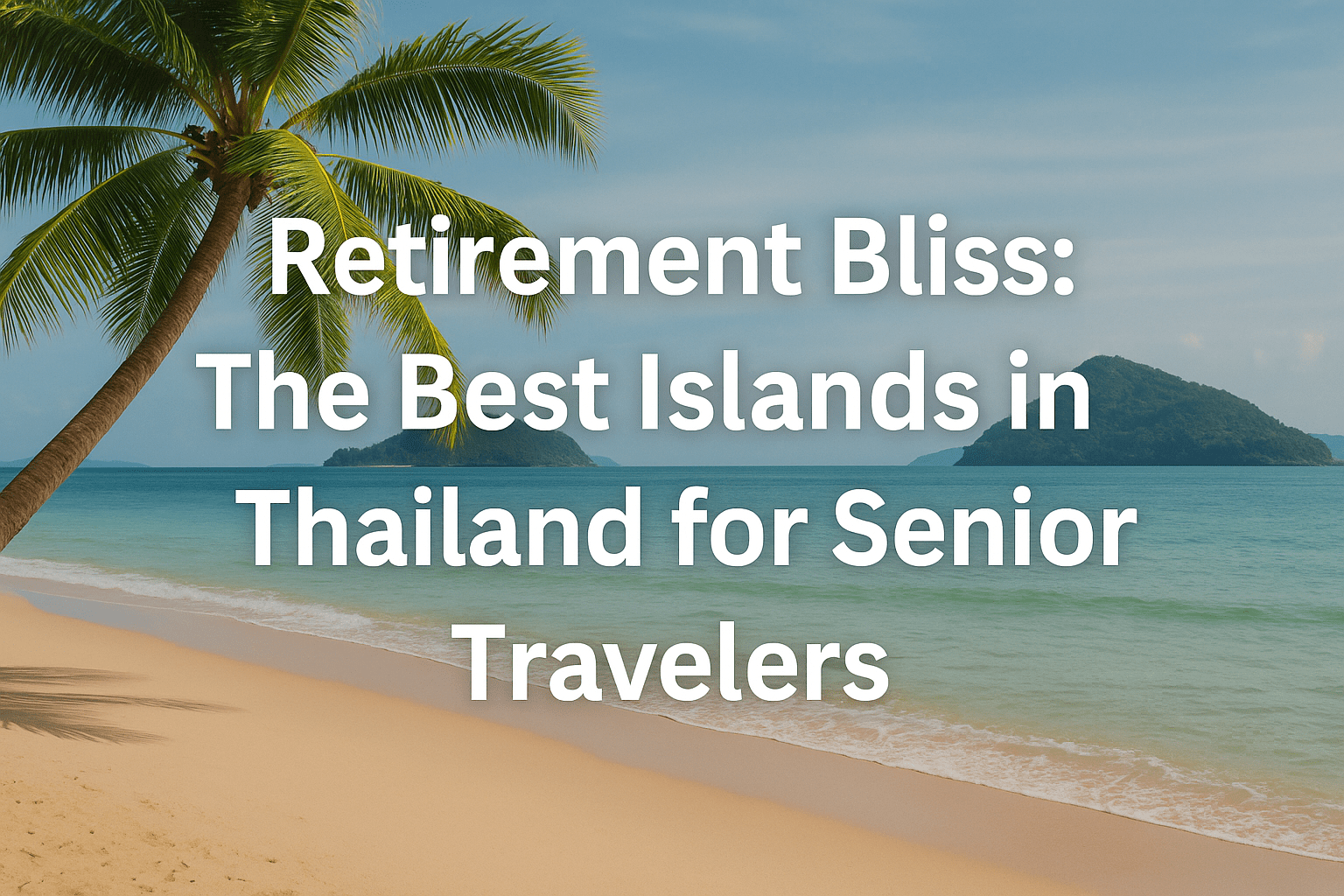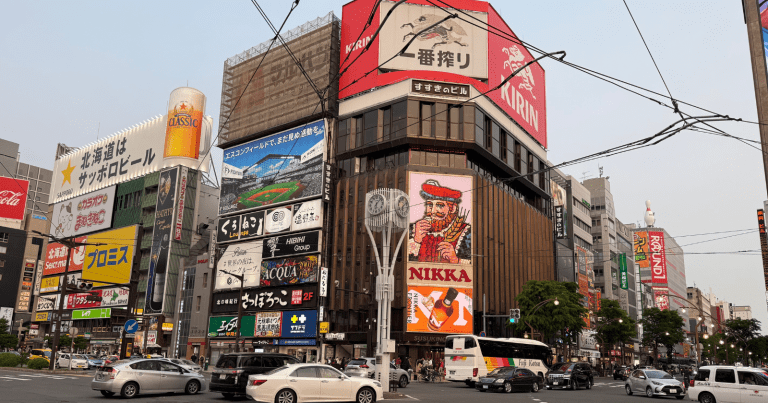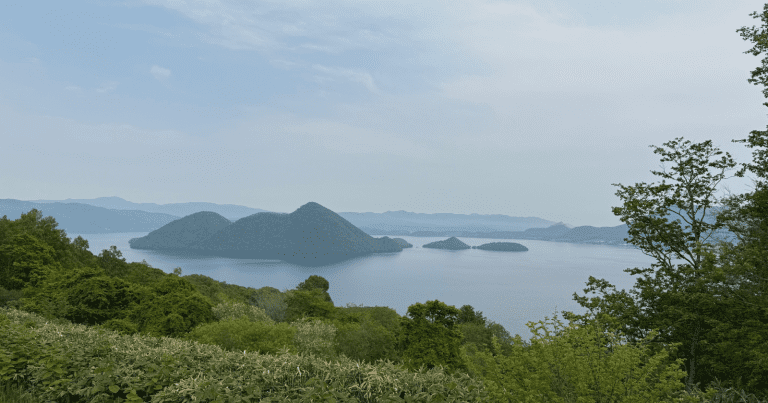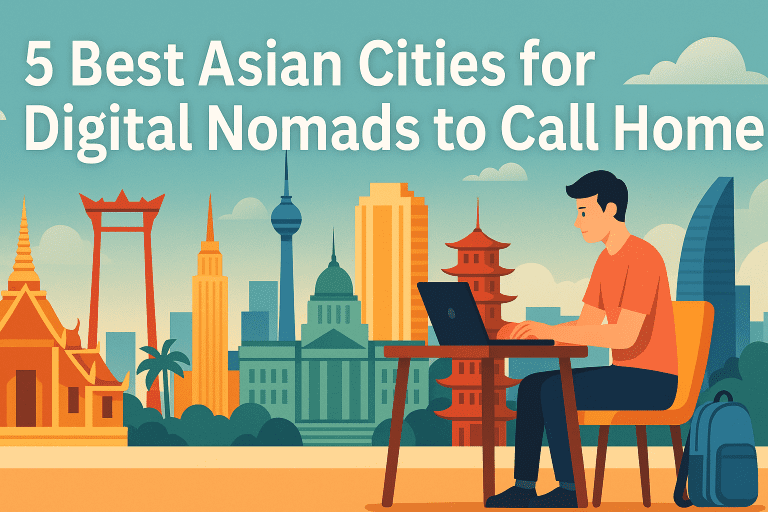
Deciding where to settle for a long-term stay or retirement in Asia presents a unique set of practical challenges. Beyond the allure of exotic landscapes and vibrant cultures, you need concrete answers about logistics, safety, healthcare, and cost of living. For many considering Thailand, the dream often involves an island paradise. But which islands offer the right blend of serene living, accessibility, safety, and necessary amenities for senior travelers or those seeking a gentler pace? This isn’t just about finding a beautiful beach; it’s about identifying a practical, sustainable base.
This article cuts through the idyllic portrayals to provide a realistic look at the best islands in Thailand for senior travelers and long-term residents seeking balance and tranquility. We’ll explore specific islands that offer a gentle pace of life while still providing access to markets, healthcare, and a sense of community. You’ll gain actionable insights into what to expect, from typical costs to navigating daily life, empowering you to make an informed decision about finding your potential island haven.
Finding Your Island Sanctuary: Criteria for Senior-Friendly Living
When considering Thailand’s islands for a long-term stay or retirement, the criteria shift significantly compared to a short vacation. For senior travelers or slow travelers prioritizing comfort, safety, and ease of living, certain factors become paramount. We need islands that are relatively easy to travel to and from, offer a quieter environment away from constant parties, provide a gentle rhythm of life, yet have accessible towns or markets for daily needs and connection. Safety and reliable basic infrastructure are non-negotiable.
Many of Thailand’s most famous islands, while stunning, can be overly crowded, noisy, or lack the infrastructure required for comfortable long-term living, especially as one ages. The goal is to find that sweet spot: an island with enough development for convenience (healthcare, varied food options, reliable internet) but not so much that it loses its charm or becomes overwhelming. We’re looking for places where you can enjoy the natural beauty and peaceful atmosphere without feeling isolated or facing significant logistical hurdles for everyday tasks.
Think about your daily routine and potential needs. Can you easily access groceries? Is there a local clinic for minor issues? How long does it take to get to a larger hospital on the mainland or a more developed island if needed? Is the island terrain manageable for getting around? These are the practical questions that guide the selection of islands best suited for senior living rather than just tourism.
Island Spotlights: Practical Options for a Peaceful Stay
Based on the criteria of accessibility, quiet living, local amenities, and safety, several Thai islands stand out as potentially suitable for senior travelers and long-term residents. These aren’t necessarily the most famous party islands, but they offer a quality of life conducive to a peaceful, extended stay.
Koh Lanta: Located in Krabi province, Koh Lanta is often cited as a top choice for families and older travelers seeking a laid-back atmosphere. It’s a large island, accessible by car ferry (or speed boat), making travel relatively straightforward. Unlike some smaller islands, it has a well-maintained main road running north-south, making getting around by scooter (if comfortable) or taxi/tuk-tuk manageable. The beaches are long and less crowded than Phuket or Samui, offering plenty of space for quiet walks or relaxation. There are distinct areas, from the slightly busier Saladan town in the north (ferry pier, banks, shops) to the progressively quieter beaches further south. You’ll find a good selection of restaurants, small shops, and essential services. The rich traditions and customs of Thailand are observable in local life here, adding to the cultural experience. Healthcare includes several clinics and pharmacies, with a hospital on the island capable of handling basic emergencies, though serious conditions would require transfer to the mainland in Krabi or Trang.
Koh Chang: Thailand’s second-largest island, near the Cambodian border, Koh Chang offers diverse environments. The west coast has several beaches catering to different crowds, but you can find quieter spots, especially further south. White Sand Beach and Lonely Beach can be busy, but Klong Prao, Kai Bae, and especially the southern beaches like Bang Bao or Salak Phet offer a much calmer pace. Like Koh Lanta, it’s accessible by ferry and has a main road, though it’s winding and hilly in parts. This requires a bit more caution with transport. Koh Chang has established infrastructure with banks, ATMs, supermarkets, and a good range of eateries. There’s a government hospital and private clinics on the island, providing essential medical support. The sense of community among longer-term residents is strong in certain areas.
Koh Phangan (Specific Areas): While infamous for its full moon parties, Koh Phangan is a large island with many peaceful corners. Areas like Thong Sala (the main town with ferry piers, banks, hospitals, markets – including great options for Thailand street food), Srithanu (known for its wellness community), or Chaloklum in the north offer significantly different vibes from Haad Rin. For a senior traveler, staying in or near Thong Sala or Srithanu provides easy access to amenities, healthcare (two hospitals on the island), and a growing community of long-term residents and wellness-focused individuals. Srithanu, in particular, offers a community-oriented lifestyle centered around yoga, meditation, and healthy living, which can be appealing. Transport around the island can be hilly, relying mostly on shared songthaews or private taxis/scooters.
Koh Samui: While more developed and generally busier than Lanta or Chang, Koh Samui has excellent infrastructure, including a significant international airport (making travel easy) and multiple well-regarded international hospitals. This can be a major plus for senior travelers prioritizing healthcare access. However, you need to be selective about location. Busy areas like Chaweng might be too much, but quieter parts like Mae Nam, Bophut (outside the Fishermen’s Village rush), or the southern parts of the island offer beautiful beaches and a more relaxed pace while being just a short drive from major amenities. The cost of living on Samui tends to be higher than on other islands mentioned due to its popularity and infrastructure level.
Practicalities of Long-Term Island Living: Costs, Healthcare, and Community
Understanding the practicalities of settling on a Thai island long-term goes beyond just picking a spot on the map. You need a realistic grip on costs, healthcare access, and how to build a sustainable life.
Cost of Living: Living costs on Thai islands are generally higher than in mainland provincial towns but can be comparable to or lower than Bangkok or major tourist hubs like Phuket. For a senior traveler focused on comfortable, non-extravagant living, typical monthly expenses (including rent, food, utilities, transport, and basic leisure) can range from 35,000 to 70,000+ Thai Baht (approx. $1,000 – $2,000+ USD), depending heavily on the island, your accommodation choice, and lifestyle. Long-term rentals (6-12 months) significantly reduce accommodation costs compared to short-term. A comfortable one-bedroom house or apartment might range from 10,000 to 25,000+ THB per month on islands like Koh Lanta or Koh Chang, while similar properties on Samui could start closer to 15,000-20,000 THB and go much higher. Food costs can be managed by eating local Thai food (delicious and affordable), utilizing fresh markets, and cooking at home. Western groceries and restaurants are available but add significantly to the budget.
“The question isn’t at what age I want to retire, it’s at what income.”
This quote, while focused on income, highlights the financial planning essential for long-term stays. While Thailand can be affordable, having a clear understanding of your required monthly budget on a specific island is crucial.
Healthcare: This is a critical consideration for senior travelers. While the islands mentioned have clinics and smaller hospitals capable of handling routine issues or basic emergencies, anything serious will require travel to the mainland. Koh Samui is an exception with its international-standard hospitals. Ensure you have comprehensive international health insurance that covers medical evacuation. Familiarize yourself with the location of the nearest reputable hospital on your chosen island and on the mainland. Many expats travel to Bangkok or Phuket for more complex medical needs, which requires factoring in travel time and cost.
Community and Social Life: While the appeal is often tranquility, connection is vital for well-being. Islands suitable for long-term stays often have established expat communities. Finding these groups (often through Facebook groups specific to the island, like “Koh Lanta Expats” or “Koh Chang Community”) is an excellent way to connect, get local advice, and find social opportunities. Participating in local activities, whether it’s a yoga class, a cooking course, or simply frequenting local markets and cafes, also helps integrate you into the island’s rhythm. The sense of belonging is important.
Visas: For stays longer than the typical tourist visa exemption period (often 30 days, extendable), you’ll need a plan. Options include tourist visa extensions, non-immigrant visas (like the ‘O-A’ Long Stay visa for those aged 50+ meeting financial requirements), or utilizing education visas if you plan to study Thai. Visa rules and requirements can change, so always consult the official website of the Thai Immigration Bureau or the Thai embassy/consulate in your home country well in advance of your planned arrival. Understanding the visa process, including potential visa runs or reporting requirements, is fundamental to a stress-free long-term stay.
Addressing Realities and Challenges
Island life, while often portrayed as idyllic, comes with its own set of practical challenges, especially for long-term residents and senior travelers. It’s important to approach this lifestyle with realistic expectations.
One significant reality is bureaucracy, particularly concerning visas and long-term stay requirements. Even with a suitable visa, reporting requirements (like the 90-day report) are mandatory. Navigating government offices in Thailand can sometimes be time-consuming and confusing, requiring patience and persistence. While services for foreigners exist in larger towns, on islands, you might need to travel to a provincial capital for certain processes.
Infrastructure, while generally good on the islands mentioned, can still be less robust than in major cities. Power outages, though usually brief, can occur, especially during storms. Internet speed can vary depending on location. While more consistent in main towns, venturing to very remote beaches might mean less reliable connectivity, something important if you rely on the internet for communication or managing affairs back home.
Healthcare access remains a key point of realism. While islands have basic facilities, specialized care requires mainland travel. For a senior traveler with specific health needs, evaluating the ease and frequency of travel to mainland hospitals is crucial. Medical evacuation insurance isn’t just recommended; it’s practically essential.
Transportation on the islands can also pose challenges. While the main roads are often paved, getting to more secluded spots might involve rougher terrain. Relying solely on scooter taxis might not be suitable for everyone. Finding comfortable and affordable private transport options for regular errands can require local knowledge.
Isolation, despite efforts to build community, can sometimes be a factor. While expat groups exist, they may fluctuate, and integrating deeply into the local Thai community takes time and effort, often requiring some grasp of the language. Periods of low season can see fewer tourists and some businesses closing, which can feel quieter than expected.
Here’s a common scenario: You decide to settle on a peaceful island like Koh Lanta. Everything is going smoothly, enjoying the quiet beaches and local life. Then, nearing your visa extension date, you realize the immigration office on the island only handles basic services, and you need to travel to Krabi town on the mainland to complete the process. It’s a multi-hour journey involving a ferry and a bus or taxi. You have to plan the trip, factor in travel time, potential queues at immigration, and accommodation if you can’t make it back in one day. It’s not a crisis, but it’s a practical challenge that requires planning, budgeting for the trip, and accepting that not all bureaucracy can be handled from your quiet island abode. Overcoming it simply involves being prepared, checking requirements and office locations well in advance, and setting aside the necessary time for travel.
“Life is a series of natural and spontaneous changes. Don’t resist them; that only creates sorrow. Let reality be reality. Let things flow naturally forward in whatever way they like.”
– Lao Tzu
Embracing this philosophy can be helpful when navigating the inevitable practical challenges of long-term travel or living abroad. Flexibility and a willingness to adapt are invaluable skills.
Safety is generally high on these islands, particularly concerning violent crime. Petty theft can occur, as anywhere, so basic precautions like securing belongings are sensible. Traffic is often cited as a hazard, especially involving scooters. Being aware of your surroundings and choosing safe transport options are important steps. Understanding local customs, like those related to visiting temples or interacting with monks, can also help ensure smooth interactions and respect in a new cultural context.
Conclusion: Making Your Island Retirement a Reality
Choosing the best islands in Thailand for senior travelers or those seeking a tranquil long-term base requires balancing the dream of paradise with practical realities. Islands like Koh Lanta, specific areas of Koh Chang and Koh Phangan, and carefully selected spots on Koh Samui offer the potential for a peaceful, accessible, and engaging retirement or slow travel experience.
We’ve covered the importance of considering accessibility, the local environment’s pace, the availability of markets and amenities, safety, and essential infrastructure like healthcare. We’ve touched on the typical costs and the need to plan for healthcare access, including potential travel to the mainland for more serious issues.
While challenges like navigating visas, occasional infrastructure hiccups, and ensuring adequate healthcare require proactive planning, they are manageable with preparation and realistic expectations. The key is to do thorough research specific to the island you’re considering, ideally by visiting for a scouting trip before committing to a long-term stay.
For further, up-to-date information on visa requirements, always consult the official Thai Immigration Bureau website or your local Thai embassy. Connect with existing expat communities on the islands through online forums or social media groups; their on-the-ground experience is invaluable. Resources like local Facebook groups for your chosen island or broader Thailand expat forums can offer real-time advice on everything from finding rentals to recommended clinics. With careful planning and a practical approach, the dream of a serene, balancing long-term stay on a Thai island can certainly become a reality.







